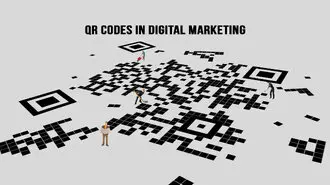Summary / TL;DR
QR codes offer small businesses a versatile tool to enhance marketing, streamline operations, and improve customer engagement. Introduced in 1994, they gained widespread adoption during the COVID-19 pandemic for contactless services and now serve broader purposes, from directing users to landing pages to processing payments. Dynamic QR codes allow real-time content updates and scan tracking, making them ideal for marketing campaigns, while static codes suit single-use cases like sharing contact info. QR codes can be used on packaging, promotional materials, menus, and signage to share videos, access forms, or link to eCommerce and social media pages. Proper design, placement, and testing are essential to maximise scan rates and user experience.
The way smartphones have transformed our lives is truly remarkable, changing how we do things in ways we couldn’t have imagined before.
Earlier, we had multiple machines and devices to complete various tasks, but smartphones help us perform such functions from a single platform. On top of that, newer technologies are being developed that enhance what can be done on mobile devices. And QR codes are the perfect example of this.
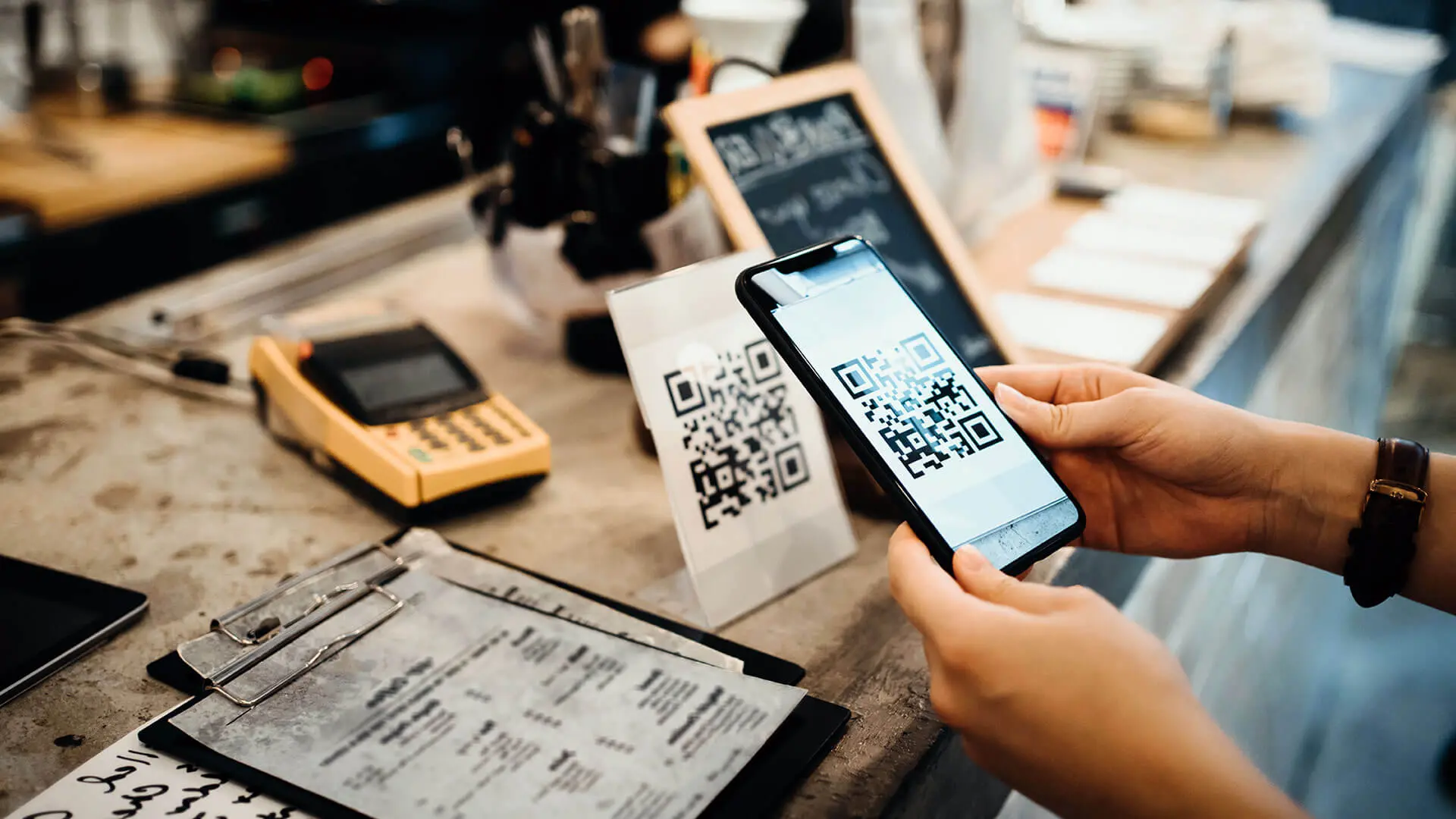
These Business QR codes work to help share and access information faster and more conveniently, making them a powerful tool for all types of businesses. Businesses can elevate their strategies by seamlessly adding QR codes in diverse areas, from enhancing marketing initiatives to forging brand recognition.
QR codes may have become popular in 2020 – 2026 as a brilliant way to handle contact tracing efforts using the QR code check-in system. The unique QR code system has become one of the fastest-growing forms of marketing to potential customers. It serves as a unique way for small businesses to expand their business.
If you’re searching for insight on how to use QR codes for business, particularly small businesses, then this guide will prove invaluable. It contains in-depth information about the best techniques for small businesses to implement QR codes, so let’s get started!
Want to receive updates? Sign up to our newsletter
Each time a new blog is posted, you’ll receive a notification, it’s really that simple.
Understanding how QR codes are used in business
Before discussing utilising QR codes for your business, let us first understand what a QR code image is.
The way a QR code works is rather intuitive; it’s essentially a form of barcode that can be scanned using a smartphone camera to glean information related to assorted actions. QR is an acronym for Quick Response, which signifies that anyone with a smartphone using a QR reader can instantly access information embedded within the code.
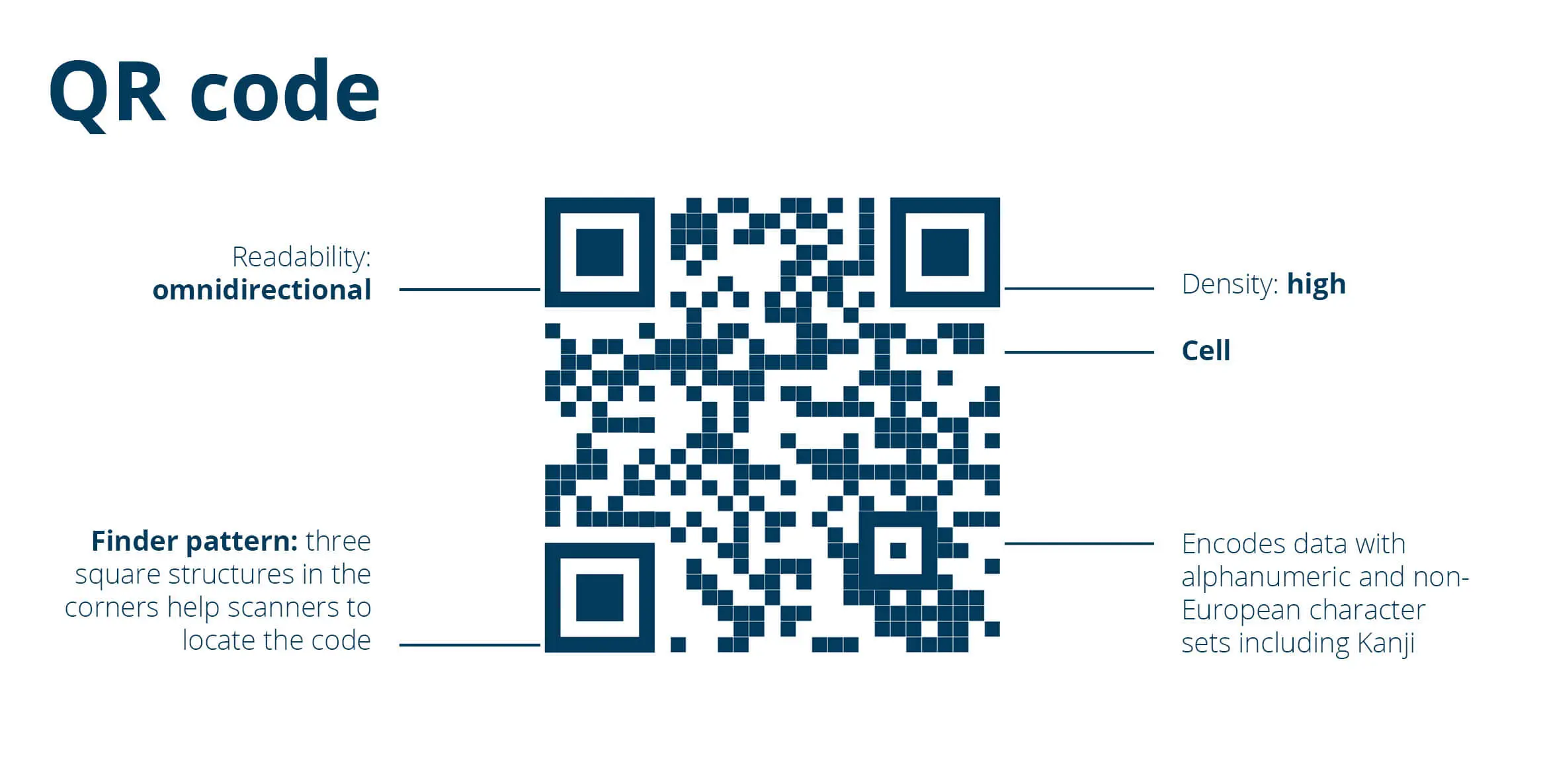
Back in 1994, Denso Wave Corporation, a Toyota subsidiary, introduced the first QR code. Since then, they’ve become a staple across businesses for everything from payments to sharing info.
The versatility of QR codes makes them the perfect tool for businesses across several industries. Since they can provide access to information immediately with smartphones, such codes are the most suitable tool if your target customers mainly comprise millennials.
Unlike a barcode, which only provides a numerical value, a QR code can store several types of information. Additionally, due to a built-in correction error technology, such codes are less susceptible to damage and remain scannable for a long t ime.
Also, unlike many other marketing tools, using these codes does not require a lot of effort or expertise. Indeed, creating your own QR code for any business involves just a few clicks, but you need to know which type of code your business requires before creating one.
Types Of QR Codes
Most QR codes fall under two categories: dynamic QR codes and static QR codes. Both types of QR codes use a website URL to connect the user with the information linked to the code. However, the type of URLs these codes use differentiates them.

Dynamic QR Codes
Dynamic QR codes are easily scannable by a mobile phone as they use short URLs without a dense pattern. The most significant benefit of dynamic QR codes is that they offer unlimited scans and the ability to edit content or URLs. This feature allows you to save resources and time printing a new code every time you change.
Additionally, you can track the data associated with dynamic codes, such as how many QR codes are scanned, when they are scanned, and where they are scanned. This makes it useful for marketing purposes.
Static QR Codes
Static QR codes have a denser pattern and are less easily scannable. The information stored in a code cannot be changed, so you cannot edit the URL or content linked to it.
In this case, It is impossible to track user data since such codes take users to a single URL. They are more suitable for personal use since you cannot use them more than once.
There is also a restriction on the type of content to which such codes can be linked, so they are unsuitable for marketing purposes.
Creating A QR Code For A Small Business
Creating a QR code is straightforward, whether it’s dynamic or static. Dynamic codes, though, offer a bit more in terms of customisation.
Learning how to get a QR code for your business is easy. Follow the steps below and learn how to create QR codes to boost your business in 2026.
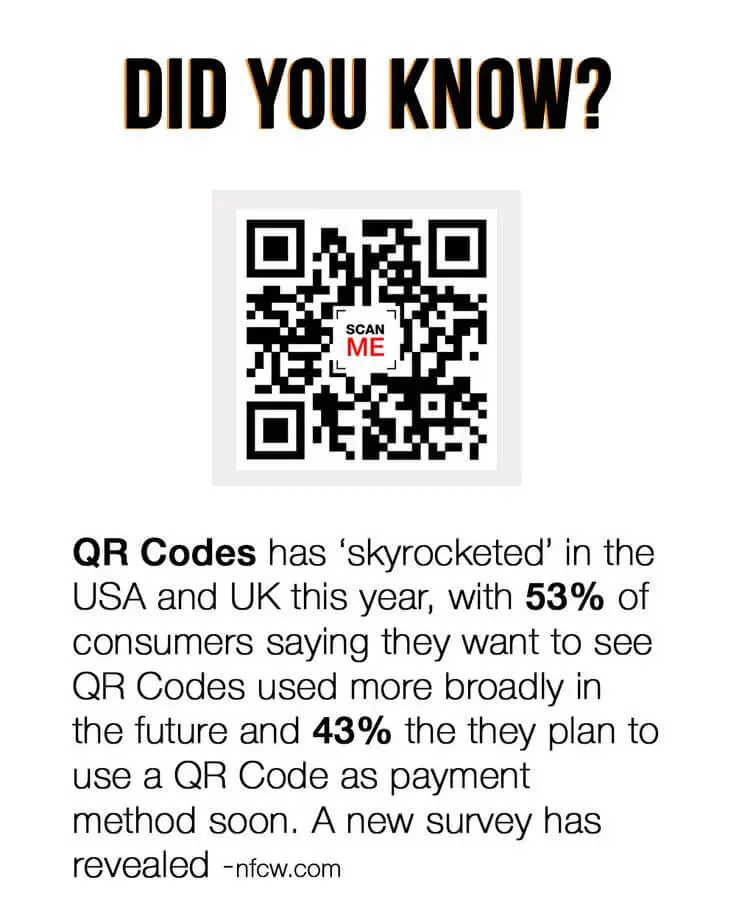
1. Selecting A QR Code Generator
The initial stage involves choosing a suitable free tool like a QR code maker to establish a QR code for your venture. Several available platforms do not require coding knowledge and provide an easy-to-use QR code creation interface.
QR code generators can help save a lot of effort and time, making the process very simple.
Here is a list of a few QR code examples of the best free QR code generators online:
2. Choosing The Right Content
Once the QR code has been created, you must decide the type of QR content to link to the code. Depending upon the nature of the business, there can be different types of QR codes and types of content that you can link to the QR code.
For example, the strategy of a consultancy may involve incorporating a QR code into their business card, facilitating swift sharing of contact details, or e-commerce businesses can link their online store pages with a business page QR code to the codes. Similarly, companies that aim to disseminate information can link their QR codes to tutorials, while real estate businesses can share details of the properties available for sale.
You can even use QR codes to provide free samples of certain products, such as books and magazines.
3. Customising The QR Code
Once the QR code generator has produced a dynamic QR code, you can customise your QR code to work perfectly with any QR code scanner, aligning it with your business needs and creating custom QR codes. Unlike barcodes, QR codes do not need to be black and white. Specific platforms may even allow changing the background and foreground colours of the QR code based on your business campaign theme.
Additionally, QR Codes can even include the brand logo within them. Once you’ve customised the QR code as required, it is ready for use on any print collateral.
4. Tracking The Marketing Campaign
Any enterprise that employs a QR code for small businesses within its promotional efforts essentially runs QR code campaigns and can effortlessly monitor the success and reach of these strategies. With these codes printed on various marketing materials, tracking how many times the QR codes were scanned is easy. You can even determine which marketing tools are most effective and utilise them accordingly to meet your business goals.
Best Practises To Follow When Using QR Codes For A Small Business
To get the most out of QR codes, there are some established practices that businesses need to follow in their marketing strategies. Here are a few methods to keep in mind that can help you improve the performance of your business.
1. Including Call-To-Action
Call-to-actions are a common marketing technique generally used in marketing campaigns that encourage users of a particular website or application to perform a specific task. Businesses should provide users with a compelling reason to persuade them to scan the QR code in the case of QR codes.
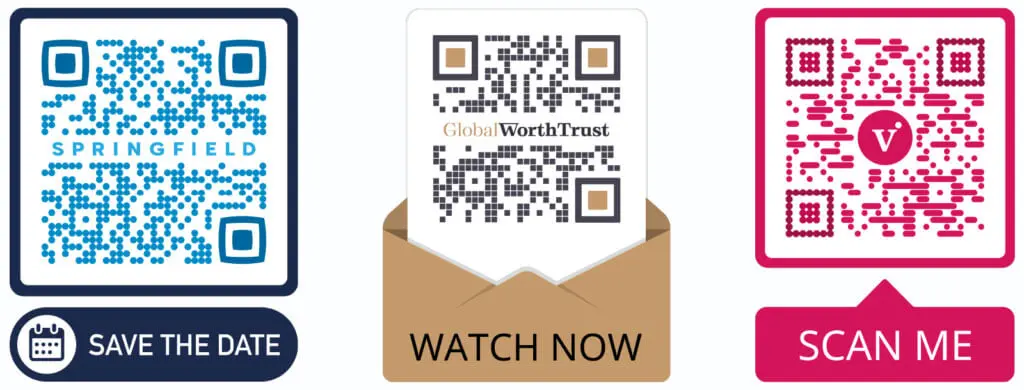
2. Ensuring Proper Quality And Size
To provide a great user experience, businesses must make their QR codes easily scannable. That means it should be printed on various platforms and merchandise so that users do not face any issues while scanning them.
In addition, the QR code’s size has to be considered. An ideal code would fit the criteria for how small a QR code can be for smartphones to scan. Understandably, unclear or improperly sized QR codes ultimately waste time and money, which can be highly detrimental for small businesses.
3. Correct Positioning Of The Code
Besides the size, the correct position of the QR code is vital for any business to obtain maximum benefits from it. You should always place the code in areas where it is most visible, making it easy for users to see and scan it.
In most cases, this means that the code should not be too far from the reach of the customers and not obscured by other objects in front of it.
4. Testing The Code Before Finalisation
You may spend a lot of time creating and customising the QR code, but it can all go to waste if it doesn’t work correctly. That’s why testing the code is very important before printing it.
Conducting these tests will help detect any issues with the QR code so that you can quickly adjust the desired link. Also, running multiple tests on various devices and applications is highly recommended to ensure that the code is working correctly. We recommend browsers such as Google Chrome and Microsoft Edge for testing purposes.
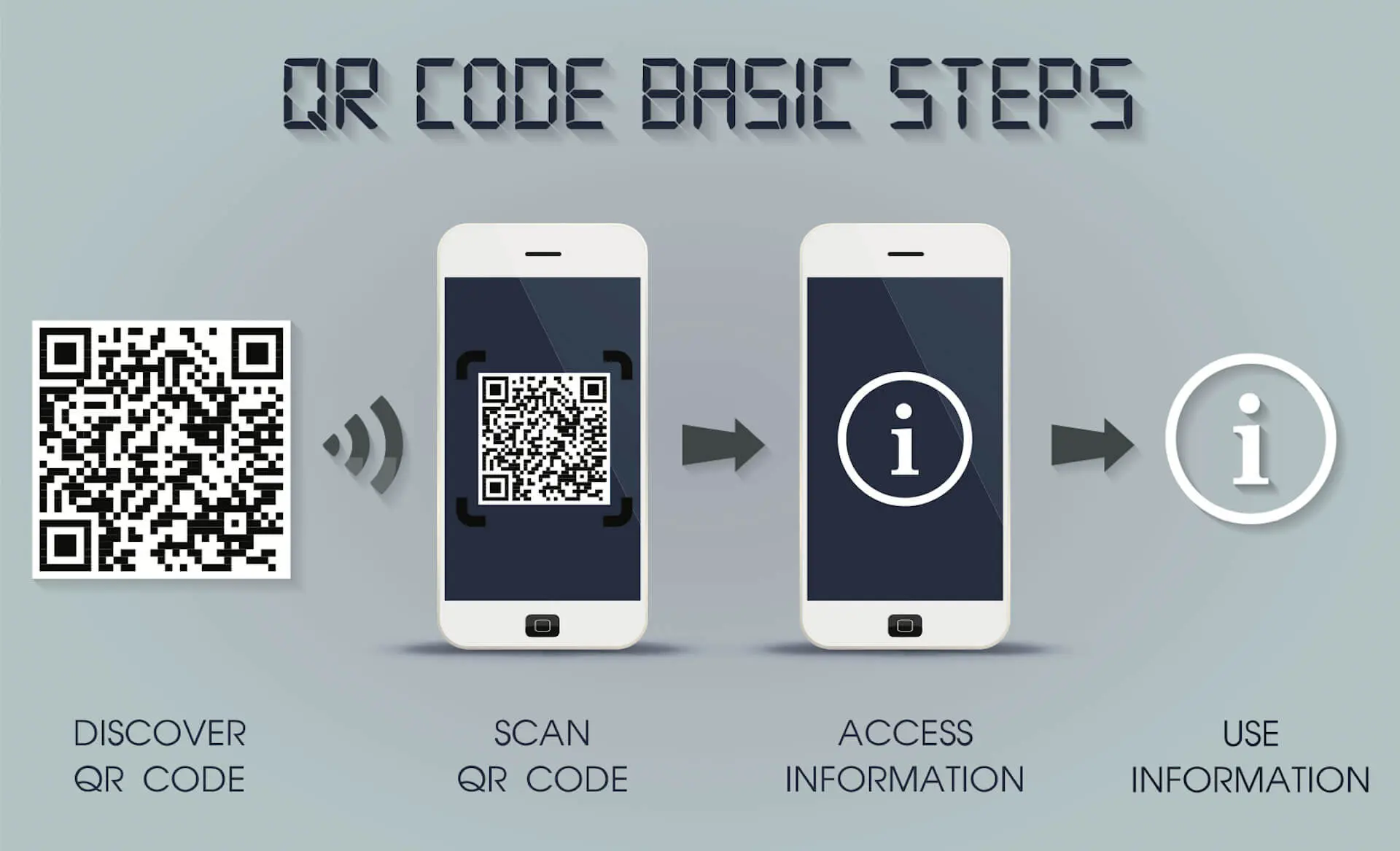
5. Providing A Rewarding Experience To Customers
Customers might need the motivation to scan QR codes, such as getting rewards for a better experience.
Businesses should create such experiences for customers to convince them to scan the QR codes. Using QR codes for small business marketing can help build a compelling brand, gain new customers, and increase loyalty. You can use QR codes for your marketing campaigns; we’ll be looking at some of these techniques now.
Using QR Codes For Marketing Purposes
Small businesses can use different techniques to maximise QR codes in their marketing strategy. We’ve mentioned some of the most effective ones here:
1. Directing Customers To A Website Or Landing Page
Businesses can create a unique QR code that takes people to a specific website or landing page using a QR code generator. This helps save time and provides a better user experience while guaranteeing more online traffic and sales for the business.
For this technique to be effective, you should use a unique URL with a QR code to measure the performance accurately.
2. Sharing Contact Details
QR codes can come in handy in situations involving huge crowds, such as business conferences. Using these codes can make it easy for various business partners and other interested parties to get the business’s contact information. Such codes can be designed to dial the number when the user scans the code directly.
Another key benefit of disseminating contact details via QR codes is that they essentially function as digital business cards, allowing you to conveniently update the data without needing to reprint the code.
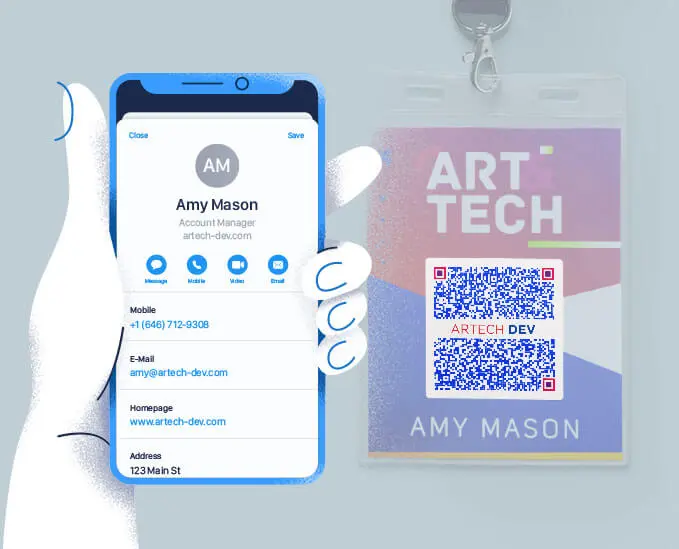
3. Sending Messages
SMS marketing involves businesses sending promotional material to customers via text messaging. It is known as text message marketing and is an effective method employed by small businesses.
As you have already guessed, you can also simplify SMS marketing with the help of QR codes.
Customers can be sent QR codes, which they can use instead of their phone numbers to sign up for promotional messages through SMS. Once the user scans the QR code, they will automatically receive a message from the company.
This technique can also add QR codes to boost sales, provide support, offer product upgrades, and more.
4. Sending Emails
You can include a call to action with a QR code for messaging purposes and use such codes to send emails. These emails can help monitor data and support the brand’s marketing campaign. You can also easily monitor the newsletters as well as their performance.
But remember that the email should be accessible on any platform the user chooses.
5. Downloading Applications
This method is excellent for businesses with smartphone apps wanting to promote their services. They can share QR codes in stores, display windows, banners, etc.
Users can quickly scan a QR code straight to the application download page. Almost any type of business can use your QR codes in this manner.
But the utility of QR codes doesn’t stop here, as downloaded apps can also use QR codes to keep users engaged. For instance, social media platforms add QR codes to allow users to invite more people conveniently. Similarly, music streaming businesses use QR codes to enable users to share and recommend music.
6. Sharing Locations
Another interesting technique of using QR codes is sharing your business location with third parties.
Businesses can make their QR codes available on their website or merchandise. These codes can be scanned by anyone who will provide the required information regarding the location.
It can be advantageous in saving time customers would have otherwise spent finding the location using Google Maps. You can even use QR-embedded billboards to help customers navigate to your newly opened store or other business location.
Not to mention, using such codes on billboards in densely populated areas can effectively boost traffic. It is especially beneficial for businesses that have opened a new outlet that customers are unaware of.
7. Directing Customers To Social Media Pages
In the current era, social media accounts have become indispensable for almost all types of businesses to promote brand awareness and visibility and create engaging relationships with customers. You can use a QR code to direct customers to your social media pages to get instant updates regarding products and services.
Moreover, brands can provide discounts and offers to customers who visit the platforms through such codes to improve engagement. For example, social media sites like your Facebook page or Instagram profile are excellent and can help increase the number of shares, likes, and followers.
8. Boosting eCommerce Stores
One of the most popular ways businesses use QR codes is to boost their sales on e-commerce platforms. It is generally done by providing offers and discounts to customers who scan the provided QR code.
Businesses such as restaurants and cafes can even use such codes to provide menus and receipts to customers.
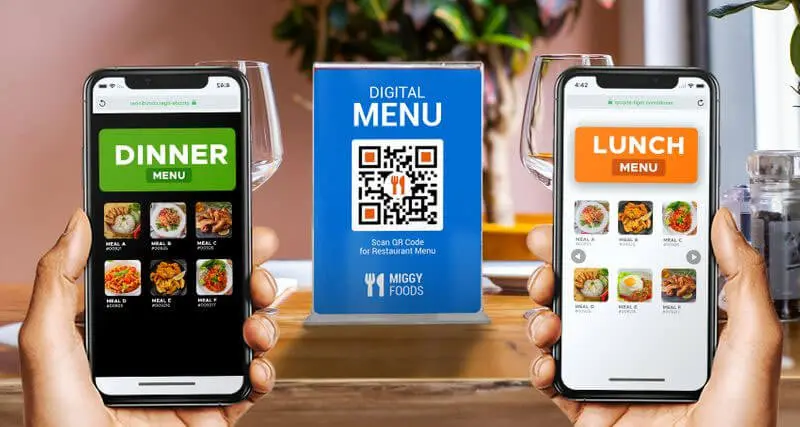
9. Driving Loyalty Card Memberships
Small businesses can foster business growth by using QR codes to provide freebies and giveaways to loyal subscribers. These freebies may include product samples or exclusive discounts, so customers interested in trying out free samples and getting deals will be motivated to scan the QR code.
These methods can go a long way in creating a loyal customer base.
10. Getting Customer Feedback
Customer feedback is essential for all types of consumer-centric businesses, and for small brands, it can determine their success or failure.
Small or new businesses looking to expand and grow their customer base should pay attention to customer feedback. Thus, they can link QR codes on product labels, receipts, or invoices to feedback forms.
Customers must scan the QR code to be redirected to the webpage containing the forms they can fill out. Businesses can even offer discounts and savings to customers who provide feedback using these codes.
11. Using Dynamic QR Codes To Retarget Customers And Track Campaigns
As mentioned previously, dynamic QR codes provide data to businesses to track visitors’ details related to marketing campaigns. Such metrics may include the time and place of QR code scans, the number of scans, campaign performance, etc.
Keeping these metrics in mind while planning your business strategy can help optimise the campaign and improve the ROI for the business. While running ad campaigns on various platforms, companies can use QR codes for potential retargeting customers, such as prospects engaged with the business but not converted.
12. QR Codes To Build A Marketing List
Businesses can use QR Codes very effectively to create a marketing list. When customers scan the QR codes on various products, they are taken directly to lead generation pages. These lead generation pages have forms that customers can fill out so businesses can get information regarding their email addresses for marketing purposes.
13. Use Video QR Codes To Increase Engagement Levels
It is known that videos and images are more effective in generating and retaining customer engagement. The higher the level of customer engagement of a business, the better the conversion rates.
That’s why businesses can use video Quick Response codes that take customers to different types of videos, including product tutorials, campaign ads, and others.
14. Using Dynamic QR Codes To Display Operational Hours
Businesses might operate for specific hours a day, which may change depending upon various factors. In such cases, they may need to inform their clients and customers of such changes timely, for which dynamic QR codes can come in handy.
Small businesses can easily display operational hours using such codes. They can also be updated as often as required to keep customers up-to-date without reprinting the code.
15. Sharing Safety Protocols
Safety protocols within your business are essential to maintain efficient performance and minimise risk. Various businesses may have different protocols, such as restrictions on the number of people, wearing masks, etc.
Businesses can print QR codes on various surfaces to inform employees and customers of different safety protocols that must be followed. The most effective way of using such codes is to place them at the entrance.
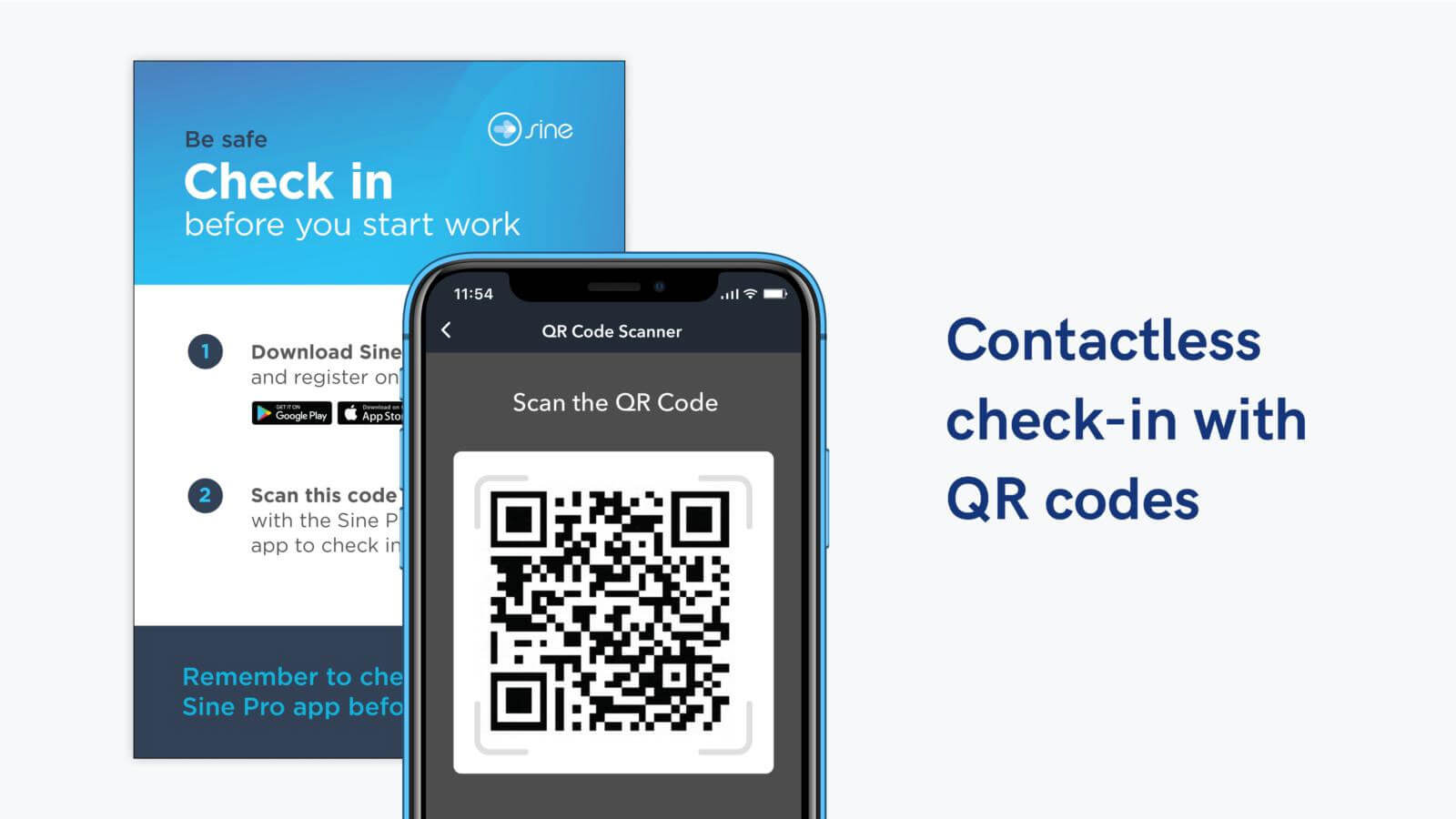
16. Using QR Codes To Get Customers To Fill Contactless Forms
Businesses may require customers to fill out different forms when entering the premises.
You can use QR codes to provide customers with forms in a contactless manner. Such codes can be placed at the entrances so customers can scan them and submit the filled-in forms before entering. This is prevalent now with mandatory check-ins across Australia due to COVID-19.
17. QR Codes For Direct Mailing
Direct mail marketing involves sending physical correspondences to target customers to increase engagement and conversions. So, brochures, flyers or printed postcards businesses send customers can carry QR codes. Once scanned by the customers, these Quick Response codes will take them to the website to complete their purchases.
You can also use printed ads in the same manner.
18. QR Codes On Infographics
Infographics involve a visual representation of data, information, or knowledge to present information efficiently. Often, customers may require more data than is available, in which case QR codes can be beneficial. Scanning the codes can take customers to web pages containing more in-depth information they might be searching for.
19. Online Contests
For small businesses, contests such as sweepstakes and giveaways are an excellent way of increasing customer engagement. Additionally, brands can gauge engagement and take course correction steps in time.
Such businesses can use QR codes to direct customers to the contest pages where they can participate and win prizes.
20. QR Codes For Customer Surveys
Businesses of all sizes and shapes require data on various aspects to function optimally, and surveys are the best way of collecting such data. You need to create surveys and link them to the QR codes, which you can then share with customers.
When customers scan the QR code, it will take them to the website, where they can fill out forms to provide brands with the necessary data for their marketing campaigns. Again, in this case, you can provide discounts and offers to customers to persuade them to fill out the forms.
21. QR Codes To Connect Salespeople
Nowadays, QR codes perform office flyers more conveniently and sustainably. QR codes are the perfect tools for connecting different sales departments. This can help them share and exchange information related to products, customer preferences, sales targets, and more.
22. QR Codes On Coupons
Your business can make it easier for customers to grab discounts and offers through coupons by using QR codes. Just add a unique QR code onto the mailer to allow customers to avail of the discount when they scan the QR code.
23. QR Codes For Interactive Advertisements
Businesses can create interactive advertisements, like images and videos, to grab customers’ attention. Interactive experiences provide a more rewarding engagement and help retain clients for a more extended period.
24. Simplifying Carryout Transactions
You can quickly implement QR codes to simplify carrying out transactions. Customers can scan the items they intend to purchase without wasting time standing in long queues.
Businesses can create QR codes for such orders and share them with customers.
25. QR Codes On Labels And Packaging
Customers often require more information about specific products before deciding to purchase them. To provide a better customer experience, businesses can add a QR code to the labels or packaging of the product. Once users scan the code, it will take them to the website, where additional information regarding the product is available.
26. QR Codes For Registering Products
This technique is employed mainly for appliances or items of a technical nature that come with warranties. The manufacturer provides a QR code on the box, which users can scan to visit the business’s official website.
Customers can then register their product to activate their warranty, get more information, or view tutorials regarding correct use.
27. QR Codes on Wrapping Paper
Add a QR Code to the wrapping paper used by your business to wrap the goods purchased by customers. Interested customers will scan the code to get updates regarding future deals and offers.
28. Reducing Paper Usage
Brands often need to complete a lot of paperwork while selling products, such as warranties, images, instruction manuals, etc. By utilising QR codes to provide relevant information, businesses can save a lot of paper and promote sustainability.
29. Using A Single Platform To Connect Social Media Channels
With so many social media channels such as Facebook, Instagram, Twitter, etc., it can become challenging for a small business to provide customers with links to other platforms. Dynamic QR codes can help solve this problem by sending visitors to a single landing page containing links to various social media platforms.
30. QR Codes For Real Estate Purposes
QR codes can provide potential buyers with a virtual tour of the property in the real estate business.
To be scanned by interested parties, real estate businesses or sellers can add a QR code to the sale sign outside the property. This can help save a lot of hassle and time.
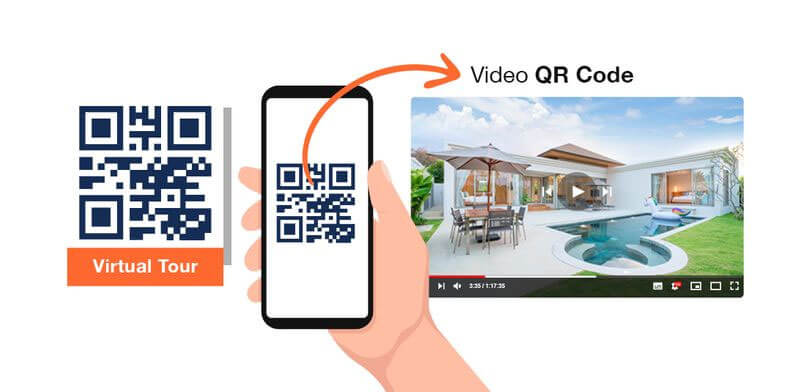
31. Making Payments Simpler
To simplify payments, you can add QR codes to invoices, receipts, and bills. Users need to scan the QR code using their smartphones to complete the payment to pay using the QR code.
The amount is deducted from the user’s linked bank account instantly, and they also retain a record of the transaction quickly.
32. Streamlining The Online Ordering Process
Shopping online provides several advantages over traditional shopping experiences, such as a wider choice of items, competitive prices, and more convenience. QR codes can further improve this experience by streamlining the entire process, as they can be directly linked to a particular product to take customers to the desired item.
33. QR Codes For Self-Serve Ordering And Payments
For businesses in the hospitality sector, the self-serve system provides a convenient option that enhances the customer experience. Customers can use the contactless dining and payment option by scanning the QR code. They just need to use their smartphones to select cuisine from the menu, place an order, and complete the payment.
34. Sharing Wi-Fi Networks
To improve the customer experience, brands may want to provide customers with network connectivity. In this case, businesses can use a static QR code to share the Wi-Fi password without manually entering a password. It also ensures that the security of the network is not compromised.
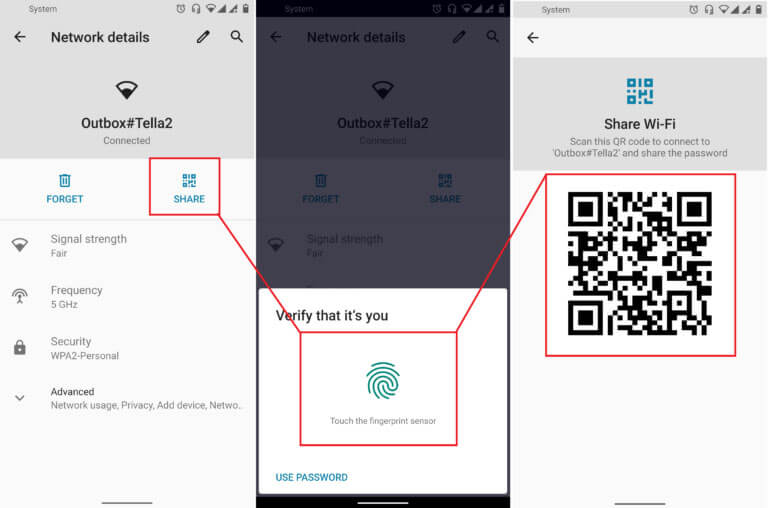
35. QR Codes For PayPal Payments
Businesses engaged in international transactions often need to use PayPal to make or receive payments. Using the PayPal smartphone app, businesses can download a QR code to share with buyers for making payments through their PayPal accounts.
36. Branded Promotional Items
Giving away promotional items such as mousepads, coffee mugs, and journals to create brand awareness is a tried and tested marketing tactic. You can also add customised QR codes to these items to provide offers and deals to loyal customers. This helps create brand loyalty while providing a better customer experience.
37. QR Codes On Name Tags
Utilising QR codes on name tags, exhibitors can get metrics to gauge the drive traffic during business conferences, trade shows, and similar events. Plus, it can make knowing about a person’s designation and role in the company easier.
38. Making Calendars More Interactive With QR Codes
Instead of marking essential events on the calendar, small business owners can utilise QR codes to make calendars interactive and more engaging. It also makes remembering important business events and sharing them with others easier.
39. Following Up Leads Using QR Codes
When a business acquires leads, QR codes can be an effective way to follow up on them. All the essential details, such as the name, phone number, email address, and company description, can easily be collected into a database using such codes.
40. QR Codes On Vehicle Wraps
Vehicles can get much more exposure than static billboards and hoardings, making them perfect for promoting your business. On that note, add a unique QR Code to the car wrap to increase exposure. Smartphone owners who scan the code will be automatically taken to the website or smartphone application of the business.
41. Interactive Greeting Cards
Another exciting way of utilising QR codes for your business is through interactive greeting cards. When customers scan the QR code, it will take them to an audio or video file that provides an interactive greeting. You can incorporate this technique easily in the marketing strategy, but it also helps enhance the overall customer experience.
42. Sharing Bitcoin Wallet Addresses
Remembering various cryptocurrency codes while making transactions using mobile wallets is challenging. QR codes make this more manageable as you simply scan the code to transfer the cryptocurrency to the other party. Alternatively, you can convert the cryptocurrency code into a QR code, which is easily accessible at all times.
43. Sharing Information Regarding Installation And Repairs
If you are engaged in delivering services such as appliance repairs or installations, QR codes can help provide customers with information regarding such procedures. The codes can be linked to manuals, spare parts, or other relevant information, assisting customers in finding them quickly.
44. Providing Information Regarding Proper Care
Businesses dealing with plants or pets can use QR codes to give customers proper instructions on caring for them. Customers no longer need to spend a long time searching for such instructions online.
45. Hassle-Free Inventory Management And Tracking
Storing and organising product details to be easily accessible is a highly complex process. QR codes can contain all important information, including part numbers, making it convenient to identify and access such information when required, making the record-keeping process highly efficient.
46. Making The Authentication Process Simpler
QR codes on branded products allow customers to verify the authenticity of their purchases. Scanning the codes on genuine products will take customers to the brand website, which is impossible with counterfeit items.
47. Providing A Way Of Contacting Customer Service
Instead of asking customers to jump through various hoops, a QR code will take customers needing help to the respective customer care. Not only does this help resolve any issues that customers face, but it also improves the overall consumer experience.
48. Directing Clients To Service Pages And Online Profiles
QR codes direct prospective clients and customers to online service pages and profiles. Customers can learn about the business and the services provided.
49. Enrolling In Online Events
Companies often conduct online events, such as webinars, which require the presence of prospective customers and clients. Instead of sending out invites personally to each person, businesses can easily create a QR code and share it with the target group. Interested parties can simply scan the code, which will take them to the webinar once it starts.
50. Providing Learning Material
Businesses engaged in online learning can provide free learning material quickly through QR codes. QR codes may be printed on book jackets or websites where learners can easily access them.
Learners simply need to scan the code to visit a page where the content is freely available for download.
51. Sharing Invitations To Reviews
Your brand can share business reviews with customers utilising QR codes by placing them at the office entrance. They can get such codes from the Better Business Bureau (BBB) website, allowing customers to leave their reviews on the website.
Incorporating QR Codes Into Your Business
When it comes to how small businesses can make the best use of QR codes, the only limit is your imagination. Various businesses can utilise different techniques for implementing QR Codes for growth and expansion.
And the best part about QR codes is that businesses can use multiple codes to achieve their goals. Different codes can be used for various purposes while helping a company perform better to provide value to its customers. The only thing to remember is to ensure that the codes are easily accessible and scannable by the target audience for the best results.
We understand that undertaking marketing efforts such as QR codes can be challenging for a small business. At sitecentre®, we have built our brand around supporting small businesses and helping them flourish and succeed in the digital world. Don’t hesitate to contact our team if you want assistance setting up a QR code for your business.
We hope you have all the information and can promote your business further with the help of QR codes.





